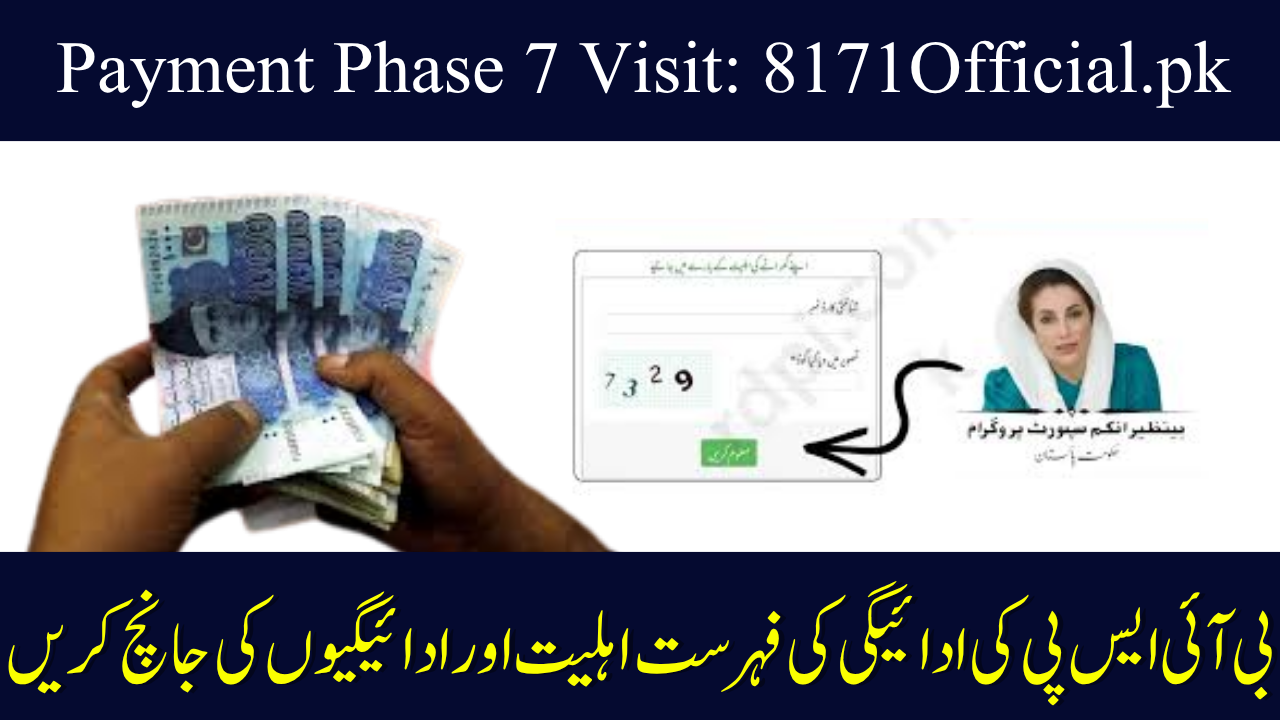The Benazir Income Support Programme (BISP) is one of Pakistan’s flagship social protection initiatives, aimed at helping low‑income households. In 2025, BISP has further pushed to digitize its systems — letting people check their status, validate eligibility, and track payments online. But many remain unsure how it works, what’s new, and what to do if things go wrong.
What is “BISP Validation / Verification” in 2025?
“Validation” or “verification” refers to the process by which BISP confirms whether a beneficiary still qualifies, whether their records are up to date, and whether payments can be released. Over time, family circumstances (income, assets, number of dependents) may change, so BISP runs periodic checks to prevent misuse and ensure only truly deserving households receive support.
- Cross‑checking with NADRA and NSER (National Socioeconomic Registry) databases
- New alerts via SMS and portal when re‑verification is required
- Biometric (fingerprint) confirmation before disbursing payment8
Eligibility Criteria for BISP in 2025
| Criterion | What It Means |
|---|---|
| Low income / poverty threshold | Your household must fall below a certain poverty cutoff determined via a Proxy Means Test (PMT) score. |
| Female adult beneficiary | Typically, the woman (18+) of the household is the recipient. |
| Valid CNIC (identity card) | Your CNIC must be current and properly registered. |
| No disqualifying assets or status | Some rules exclude those with government jobs, large property or heavy assets, or high income sources. |
| Biometric verification | Fingerprint scanning is now required to receive the payment at disbursal. |
| Updated household survey / data | If your family composition or income has changed (for example, marriage, death, change in income), you must update your data in the dynamic survey or registration. |
How to Check Your BISP Status / Validation Online (2025)
Method 1: 8171 Web Portal (Online)
This is now the central digital interface. Here’s how to use it:
- Go to 8171.bisp.gov.pk (or the portal address provided by BISP)
- Enter your 13-digit CNIC number (no dashes)
- Solve the captcha or security code shown
- Click “Check Status” or “Submit”
- The portal will display your eligibility status, payment status (if any), and disbursement information or prompts like “Re-verification required.”
Method 2: SMS via 8171
- Open your SMS app.
- Type your 13-digit CNIC (no dashes, no extra text).
- Send it to 8171.
- You should receive a reply with your eligibility status, payment amounts, or instructions if re-verification is needed
Method 3: In-Person / BISP Office
If you have trouble with the portal or SMS (for example, data mismatch, re-verification required), you may visit your nearest BISP Tehsil Office. Bring your original CNIC and any supporting documents, and ask for help to update or validate your status.

Payment Updates & Disbursement in 2025
Amount of Payment
- In 2025, the cash support (Kafalat installment) has been set at Rs. 13,500 (quarterly) for eligible households.
- Some reporting and rumors suggest future increases, but as of now, 13,500 is the official figure.
Disbursement & Phases
- BISP often uses a phased district‑wise rollout for payment disbursement. That means different districts or areas receive payments at different times.
- After validation, payments are released to beneficiaries via partner banks, BISP campsites, biometric ATMs, or mobile vans in remote regions.
- To collect, the beneficiary must present original CNIC and complete biometric (fingerprint) verification at the collection point. No one else (proxy) can collect on their behalf.
What the Payment Status Shows
- “Eligible — Payment in Process”
- “Under Verification / Re-verification Required”
- “Ineligible” with a reason or instructions to update your data
- Disbursement details: when and where you can collect funds
Common Problems & Solutions (Troubleshooting)
| Problem | Possible Cause | Solution |
|---|---|---|
| “No response” when sending CNIC → 8171 | SIM not registered under your CNIC, network issue, or temporarily busy server | Verify your SIM registration, retry later, use portal |
| “Ineligible” but you believe you should qualify | Data mismatch, outdated survey, missing updates | Visit BISP office to update info, apply dynamic survey, check portal for instructions |
| Biometric / fingerprint mismatch at collection | Records don’t match NADRA, worn fingerprint | Visit NADRA for re-capture of fingerprints; retest |
| CNIC expired / invalid | Your ID is out of date | Renew CNIC at NADRA before trying to collect |
| Agent or middleman demanding commission | Fraud or misuse | Don’t pay; report to BISP via helpline or complaint center |
| Payment delayed | District rollout schedule or system backlog | Keep checking portal/SMS; contact BISP office or helpline if delay persists |
Tips to Safeguard Your BISP Benefits
- Always double check via official channels only: 8171 portal, SMS to 8171, or BISP’s own offices. Beware of fake websites or agents asking for money.
- Keep your CNIC renewed and valid
- Make sure your SIM card is registered with your CNIC
- Whenever there is a dynamic survey or update cycle, participate and provide accurate information
- If flagged as “Ineligible,” follow the portal instructions and go to BISP/NADRA centers promptly
- Keep the helpline number handy: 0800‑26477 (toll free)
- Always collect your payment in presence of BISP staff, complete biometric verification, and keep the receipt
Future Outlook & Expectations
With 2025, BISP is pushing further into digital systems, reducing dependency on physical offices and making the process more transparent. Portal‑NADRA integration, SMS alerts, and phased payments are expected to become smoother with time.
- Digital access and literacy in remote areas
- Biometric mismatches or outdated data
- Delays in district‑wise rollout
- Fraudulent agents exploiting beneficiaries

Conclusion
BISP’s move toward validation and verification online in 2025 marks a significant shift. You can now check your eligibility and payment status without traveling long distances or waiting in queues. But with this power comes responsibility: keep your CNIC, SIM, and family data accurate and up to date. Respond promptly to re-verification requests, and always use official channels.
Related Posts













